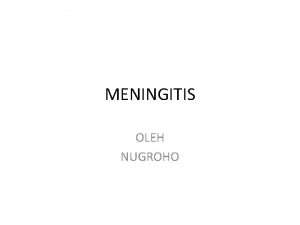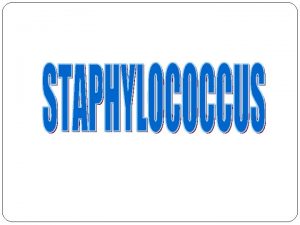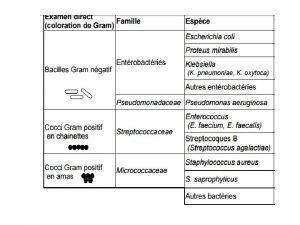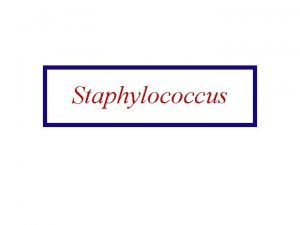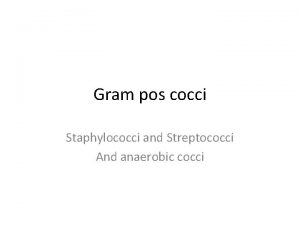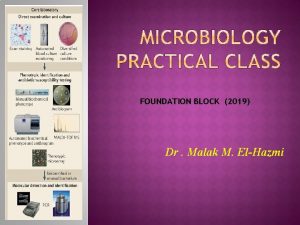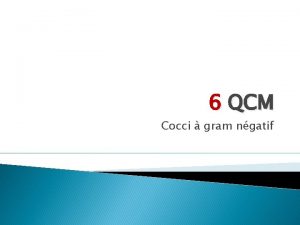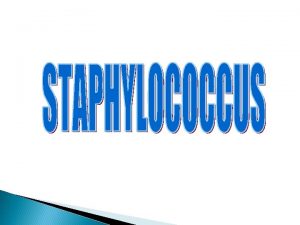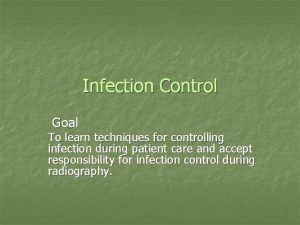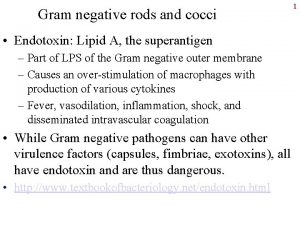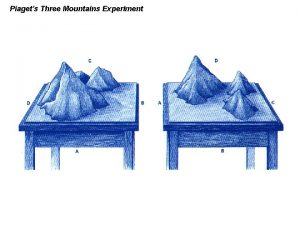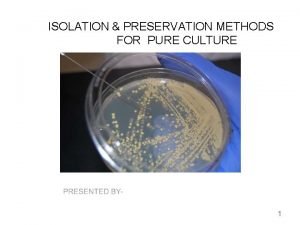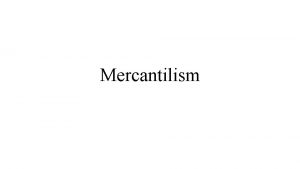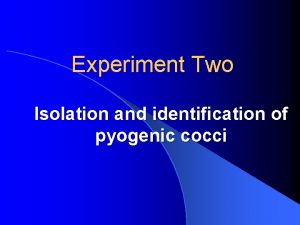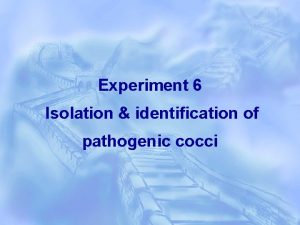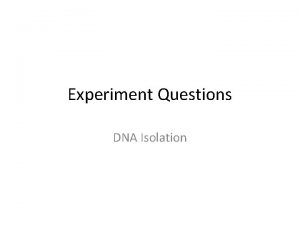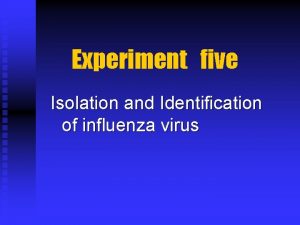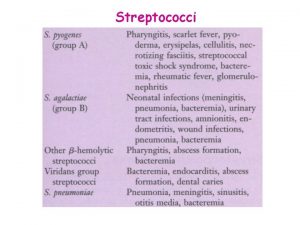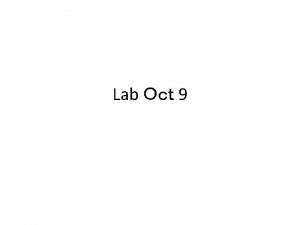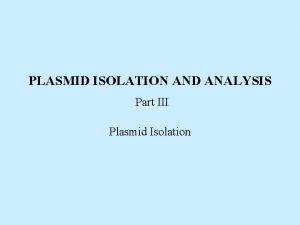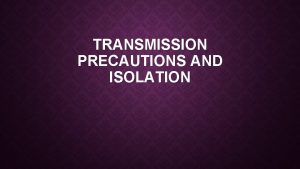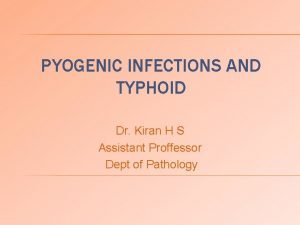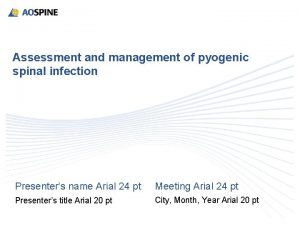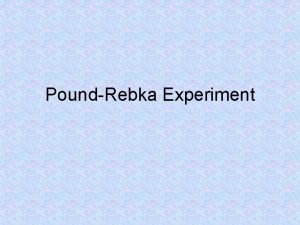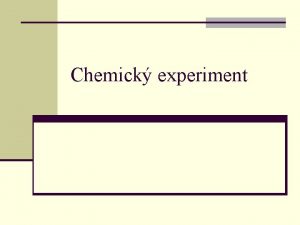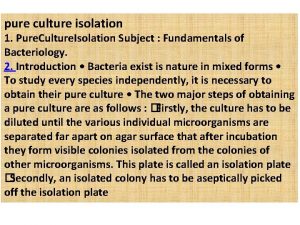Experiment Three Isolation and identification of pyogenic cocci
































- Slides: 32

Experiment Three Isolation and identification of pyogenic cocci

Objective of Experiment n To master basic principle and method, which use to isolate and identify pyogenic cocci from clinical specimens. n To diagnose clinical disease and guide doctors to select proper medicines.

PROCEDURE Smears (Gram-stain) Specimens Isolation culture (blood agar plate) Morphological characteristics (Microscopic examination) colonial morphology observation Colonial characteristics Hemolytic reaction Pigmentation stained and observe typical colonies Pure culture Direct identification Antibiotic susceptibility test

Identified method for Staphylococci n n Gram-stain Isolation and culture Pure culture Direct identification

Staphylococci are Gram-positive cocci, typically arranged in clumps or Grape-like clusters


Direct identification The mannitol fermentation test. n The Coagulase Test n The Dnase Test n The phage typing test n Animal Experiment n

The mannitol fermentation test. n Inoculate the bacteria into a mannitol micro-tube, incubate at 370 C for 18 h. S. aureus will ferment mannitol to produce acid, which causes the medium to turn yellow.

Test of Microbiological experiment n While a patient is infected by pathogenic enterobacteria (Salmonella) , how to diagnose with ( microbiological methods in lab? (simple procedure) n While a patient is infected by pyogenic cocci, how to diagnose with microbiological methods in lab? (simple procedure) n While a patient is infected by influenza virus, how to diagnose with microbiological methods in lab? (simple procedure)

The Coagulase Test n Coagulase is an enzyme converting fibrinogen into fibrin promoting blood clotting. n It might be a virulence factor with the coagulated blood around the bacteria protecting them from the immune system. n Coagulase-negative strains are often as pathogenic as coagulase-positive strains.

The Slide Coagulase Test

The Tube coagulase Test Left tube coagulase positive Right tube coagulase negative

The Dnase Test n Inoculate Dnase agar plates with a loop so that the growth is in plaques about 1 cm in diameter. Incubate at 370 C overnight. Flood the plate with 1 N hydrochloric acid. Clearing around the colonies indicates Dnase activity. The hydrochloric acid reacts with unchanged deoxyribonucleic acid to give a cloudy precipitate. A few other bacteria, e. g. Serratia, may give a positive reaction.

The phage typing test n This test is used to trace the infective agent in epidemiology if necessary. n It is usually not done for routine clinical purpose.

Animal Experiment vomit excrement remaindered food Meat soup media filter injection 6— 8 w cat observation Food poisoning Isolation and identification of bacteria

The antibiotic susceptibility test This test is helpful for the treatment of S. aureus infection. n materials n u Staphaureus(isolated from the pus of a patient). u Several kinds of filter paper (each contains different kinds of antibiotics) u Nutrient agar plate

The antibiotic susceptibility test Streaking the staphaureus on agar plate (thoroughly covered the plate) 1. Put 4 kinds of paper contained different antibiotics on the plate (each paper are far away about 2 cm) Incubate at 370 C for 18 -24 hours. Observe the results the plates The sensitivity of the organism is indicated by the diameter of the zone of growth inhibition.


Laboratory Diagnosis of Pathogenic Enterobacterial Infection

Dimidiation of the enterobacteria according to the fermentation of lactose n Lactase fermenters: saprophytic and commensal Escherichia Enterobacter n Klebsiella Non lactase fermenters: Salmonella Proteus Shigella Serratia Citrobater pathogens some Citrobacter


Procedure Colonial characteristic observation Specimens isolation Gram Staining (SS/EMB plate) Serological identification TSI Biochemical reaction

Specimens n Different specimens should be taken depending on the kind and the process of the disease. blood bone marrow Urine stool

Isolation Culture medium: S. S agar n Method: streak plate n Result: Pathogenetic colonies: middle size, red Suspect colonies: colorless, small, opaque n

Biochemical reactions of Salmonella, etc Species E. coli Salmonella Other Salmonella Shigella bottom AG A bottom: ferment dextrose A: acid AG: acid and gas slope AG - H 2 S +/+/+/- motility + + + - slope: lactose

Antigens of salmonella n O antigen polysaccharide of LPS somatic antigen used to divide Salmonella to 42 groups A-Z groups are pathogenic stable to heat (remains activity at 100 ℃ ) H antigen Vi antigen flagella antigen divide Salmonella tow phase: special no special related to the virulence of Salmonella sensitive to heat ( lose activity at 60 ℃)


Salmonella

Serological Identification of Salmonella Select the specimen React with A-Z polyvalent antiserum Agglutination reaction (+) React with several individual types of anti-O and anti-H antiserum Identify its group and phage ( -) React with anti-Vi antiserum

Gram Stain

Gram stain of Nocardia asteroides acid-fast stain of Nocardia asteroides

flagella
 Pyogenic meningitis adalah
Pyogenic meningitis adalah Pyogenic meningitis definition
Pyogenic meningitis definition Central pocket whorl vs plain whorl
Central pocket whorl vs plain whorl Gram positive grape like clusters
Gram positive grape like clusters Gramles
Gramles Streptococcus gram negative
Streptococcus gram negative Agar
Agar Staph aureus morphology
Staph aureus morphology Erythrogenic toxin
Erythrogenic toxin Gram positive cocci in urethral discharge
Gram positive cocci in urethral discharge Qcm cocci gram positif
Qcm cocci gram positif Sarcinae
Sarcinae Folliculitis carbuncle furuncle
Folliculitis carbuncle furuncle Gram positive cocci
Gram positive cocci Staphylococcus aureus cocci or bacilli
Staphylococcus aureus cocci or bacilli Rods or cocci
Rods or cocci Characteristics of experimental research design
Characteristics of experimental research design Three mountains experiment
Three mountains experiment Curley's wife and loneliness
Curley's wife and loneliness Hobbits and orcs problem psychology
Hobbits and orcs problem psychology Invisibility
Invisibility Emphasis by isolation examples
Emphasis by isolation examples Principle of least privilege
Principle of least privilege Aries in dbms
Aries in dbms Chapter 19 an age of explorations and isolation
Chapter 19 an age of explorations and isolation Isolation and preservation method for pure culture
Isolation and preservation method for pure culture Dutch exploration routes
Dutch exploration routes Mercantilism
Mercantilism Least common mechanism
Least common mechanism Othello act three scene three
Othello act three scene three In three minutes write
In three minutes write Orange diamond shaped signs warn the motorist of
Orange diamond shaped signs warn the motorist of The three colonial sections-one society or three
The three colonial sections-one society or three
